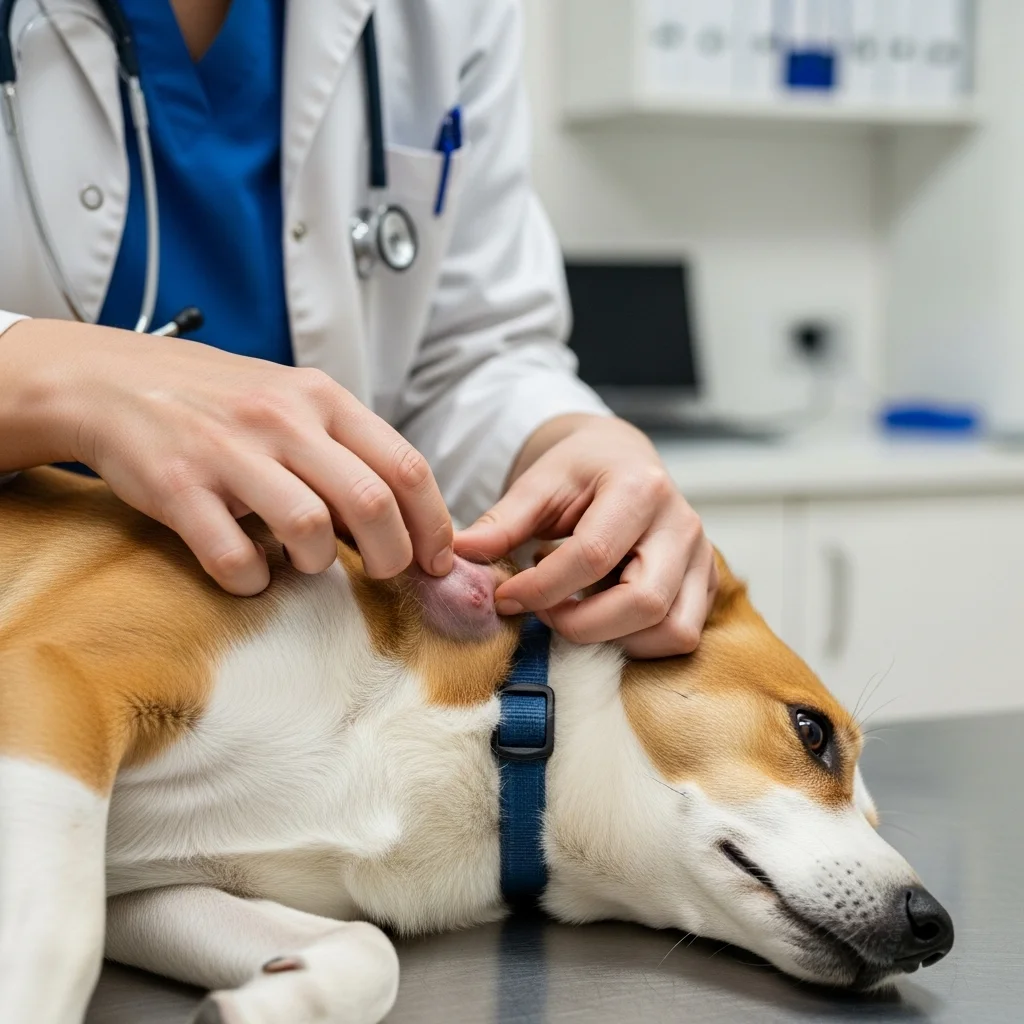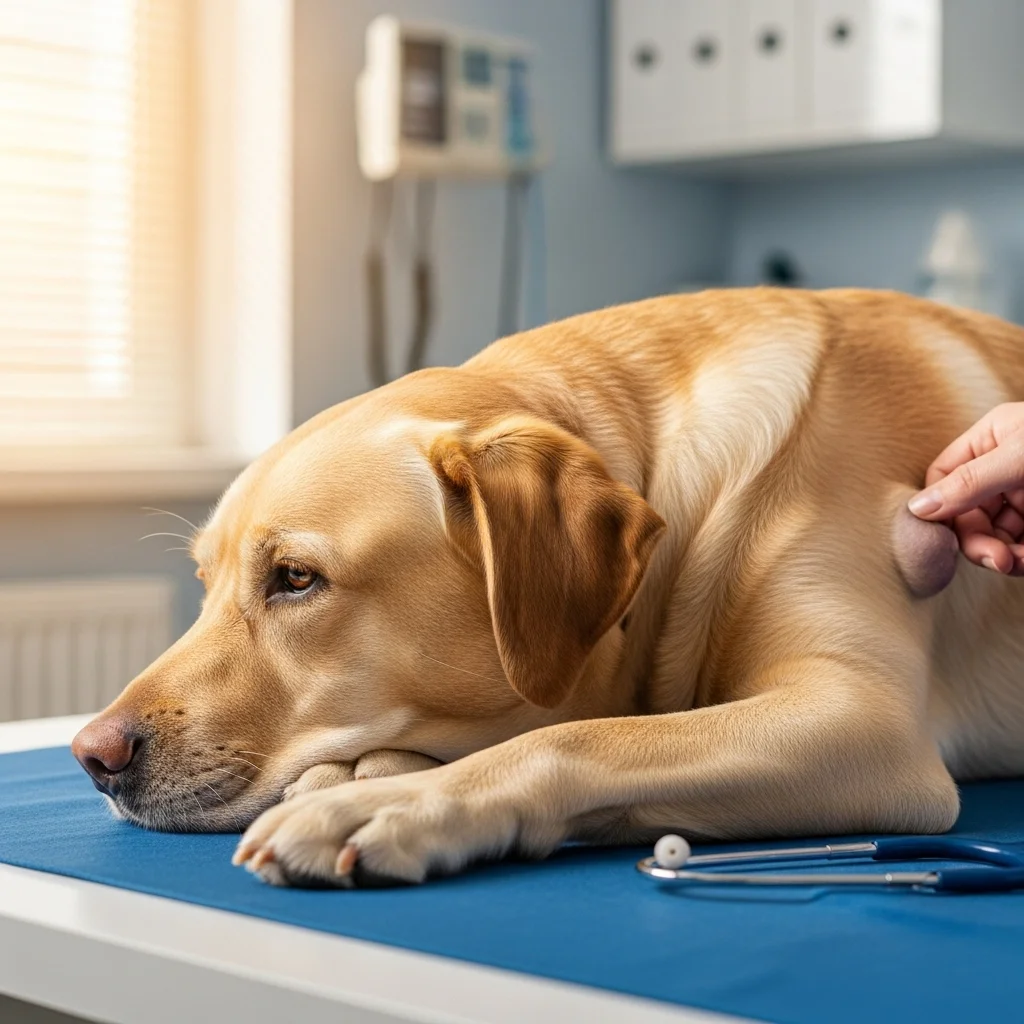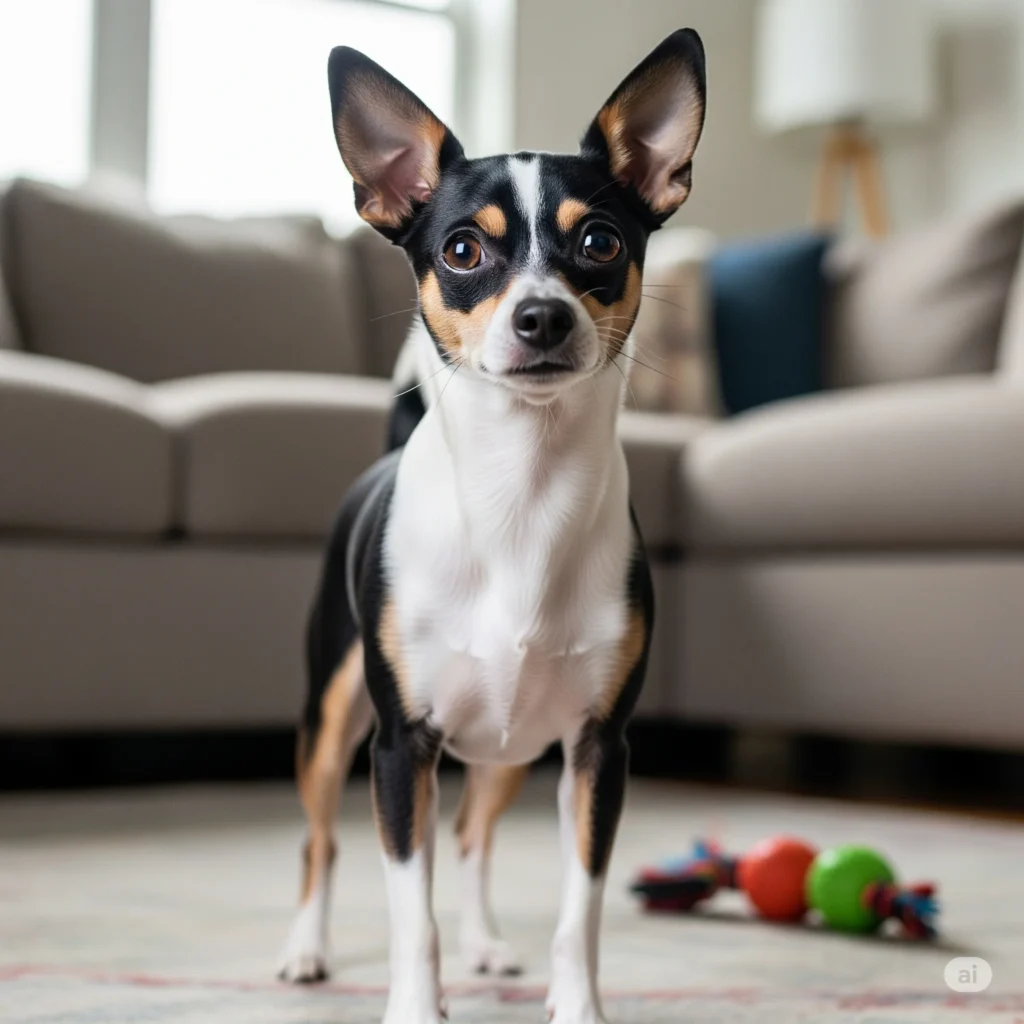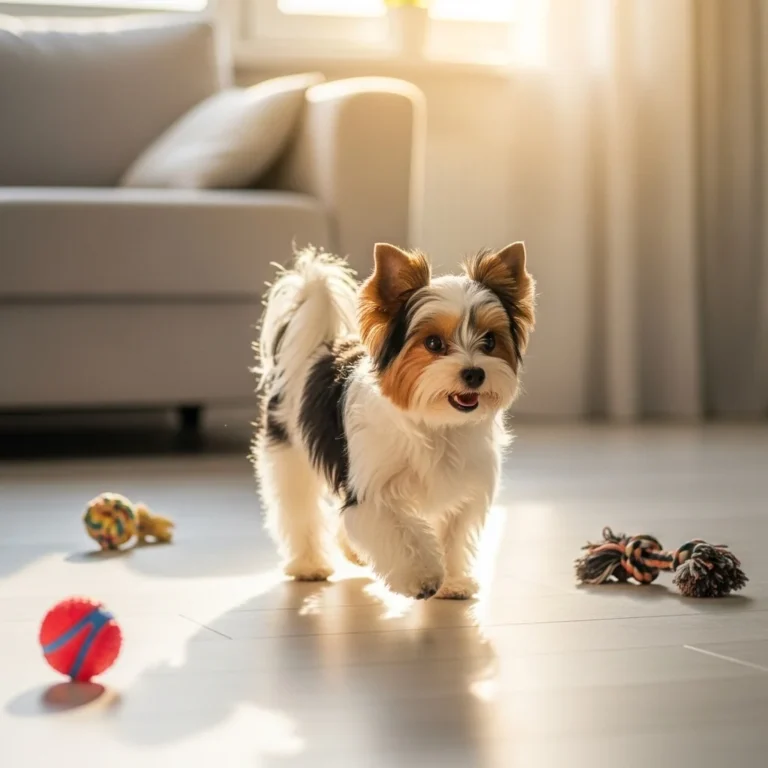
Common Questions About Lipoma in Dogs: A Chill Guide for Pet Parents
Finding a weird lump on your furry bestie can totally freak you out, right? I mean, your dog’s just vibing, and suddenly there’s this squishy thing under their skin. Chances are, it’s a lipoma—a fancy word for a harmless fatty blob. They’re super common, especially in older pups, and usually nothing to lose sleep over.
But let’s be real, you’ve got questions! Like, what are these things? Should you do something about it? Is it gonna cost an arm and a leg to fix? Don’t worry, I’ve got you covered. I’ve scoured Google, Bing, and even Reddit (because dog parents spill all the tea there) to answer the most common questions about lipomas in dogs.
Think of this as me chatting with you over coffee, breaking it all down in a fun, no-stress way. Let’s dive in and figure out what’s up with these fatty lumps!
Understanding Lipomas
What exactly is a lipoma?
Alright, picture this: a lipoma is like a little fat pillow chilling under your dog’s skin. It’s a benign (aka not cancerous) tumor made of fat cells. You might find it while giving your pup a belly rub—it feels soft, maybe a bit wiggly, and usually doesn’t bug your dog at all. They’re crazy common, especially in older dogs, and one of the top reasons you’ll find a lump during a snuggle sesh.
lipoma in dogs images

Are lipomas in dogs cancerous?
Okay, first thing you’re probably thinking: “Is this gonna kill my dog?!” Good news—lipomas are not cancerous. They’re chill and won’t spread to other parts of your pup’s body. But there’s a sneaky version called an infiltrative lipoma that can grow into nearby tissues, like muscles, which makes it trickier to deal with. Still not cancerous, but worth a vet check to be 100% sure. Dr. Sarah Johnson from the Animal Cancer Center says, “Most lipomas are no biggie, but always get a vet to confirm it’s not something sketchy.” So, don’t panic, but don’t skip the vet visit either!
How can I identify a lipoma on my dog?
You’re probably petting your dog and—bam!—you feel a lump. Lipomas are usually soft, kinda squishy, and move around a bit under the skin. They can be tiny like a pea or big like a golf ball, and you’ll often find them on your dog’s chest, belly, or upper legs. My tip? Make petting time your secret weapon. Regular scratches and grooming let you know your dog’s body like the back of your hand, so you’ll spot anything new. If you find a lump, jot down its size and vibe (soft? hard?) to tell your vet.
What does a lipoma feel like?
Think of a lipoma like a soft, squishy stress ball under your dog’s skin. Here’s the deal:
- Soft and squishy: Not hard like a rock or super tense muscle.
- Wiggly: You can usually nudge it around a bit—it’s not glued to the tissue below.
- No pain: Your dog shouldn’t flinch when you touch it. If they do, that’s a red flag—call the vet!
- Clear edges: You can usually feel where it starts and stops.
But heads up—not every lump is a lipoma, so let your vet play detective.
Do lipomas grow quickly?
Most lipomas are slowpokes. They might stay the same size forever or creep up a bit over months or years. If you notice one blowing up fast—like in a few weeks—that’s not normal for a lipoma and needs a vet’s eyes ASAP. Pro tip: Snap a pic with a ruler next to the lump every month to track it. Makes it way easier to tell if it’s growing.
At what age do dogs typically develop lipomas?
Lipomas love to crash the senior dog party. They’re super rare in puppies and usually show up in middle-aged or older pups. It’s like your dog’s body decides, “Hey, I’m older now, time to collect some fat lumps!” So if your gray-muzzled buddy gets one, it’s not a shocker.
Are certain dog breeds more prone to lipomas?
Yup, some breeds are just lipoma magnets. If you’ve got a:
- Labrador Retriever
- Golden Retriever
- Dachshund
- Miniature Schnauzer
- Beagle
- Weimaraner
- Shetland Sheepdog
- Doberman Pinscher
…keep an extra eye out during belly rubs. It’s not a guarantee they’ll get one, but their DNA makes it more likely. Just one of those quirky breed things!
Causes and Risk Factors
what causes lipomas in dogs?
Here’s the thing: nobody’s totally sure why lipomas pop up. It’s like asking why your dog loves stealing socks—some mysteries remain! Genetics and age seem to be big players, and some dogs are just wired to get these fatty lumps. It’s not like one specific thing makes them appear, but a mix of factors can set the stage.
Is my dog’s diet related to lipoma development?
You might think, “Fat lumps? Must be the kibble!” But the science isn’t super clear on diet causing lipomas. That said, a junky diet full of processed carbs or low on good fats and nutrients might mess with your dog’s system and maybe make fat lumps more likely. Dr. Karen Becker, a cool holistic vet, swears by whole-food diets for keeping pups healthy overall, which could help. Check out her tips at Dr. Karen Becker’s Healthy Pets. No hard proof diet causes lipomas, but feeding your dog good stuff is always a win.
Can obesity contribute to lipomas?
Oh, for sure! Chubby pups are more likely to get lipomas. It’s not like extra weight makes a lipoma appear, but more body fat means more chances for these fatty lumps to form. Plus, keeping your dog lean is awesome for their joints, heart, and all-around happiness. So, maybe cut back on those extra treats (sorry, Fido!).
Are there any genetic factors involved?
Totally. If your dog’s parents or grandparents had lipomas, or if they’re one of those prone breeds, they’ve got a higher shot at getting them. It’s like inheriting your mom’s curly hair—just part of their DNA package.
Diagnosis and Monitoring
How does a vet diagnose a lipoma?
When you roll up to the vet with a “What’s this lump?!” vibe, they’ll feel it up—checking its size, squishiness, and if it moves. Usually, they’ll do a quick test called a Fine Needle Aspirate (FNA). It’s just a tiny needle poke to grab some cells, no big deal—most dogs don’t even need sedation. The vet looks at the cells under a microscope, and if it’s all fat, boom, it’s likely a lipoma. Easy peasy.
Is a biopsy always necessary for diagnosis?
Nah, not always. The FNA usually does the trick for simple lipomas. But if the lump’s acting weird or the cells look funky, your vet might suggest a biopsy—either snipping a bit of the lump or taking the whole thing out to send to a lab. Dr. Alice Chen from the American College of Veterinary Pathologists says, “FNA’s great for a first look, but a biopsy’s the real MVP for tricky cases.” It’s like double-checking your math homework.
How often should I monitor a lipoma on my dog?
Once your vet says it’s a lipoma, you’re on lump-watch duty! Check it every month or so for changes in:
- Size: Is it getting bigger? How fast?
- Shape: Is it looking wonky?
- Feel: Is it harder or softer than before?
- Movement: Is it stuck in place now?
- Skin: Any redness, hair loss, or ooze?
- Pain: Does your dog yelp when you touch it?
If anything seems off, call your vet. I like to snap monthly pics with a ruler for comparison—it’s like a lump diary!
What signs indicate a lipoma might be problematic?
Most lipomas are chill, but watch out for these red flags:
- It’s growing like crazy in a few weeks.
- It feels hard or weirdly shaped.
- Your dog acts like it hurts when you touch it.
- The skin over it gets red, itchy, or starts leaking.
- It’s messing with your dog’s walking or lounging.
- It’s gone from wiggly to stuck in place.
Any of these? Time to hit up your vet, stat.
Treatment and Management
Do all lipomas need to be removed?
Nope! Tons of dogs live their best lives with lipomas that never cause drama. If it’s small, not growing, and not bugging your pup, your vet might say, “Just keep an eye on it.” No need to stress your dog (or your wallet) with surgery if it’s not causing trouble.
When is surgical removal recommended?
Sometimes, though, surgery’s the move. Your vet might suggest it if:
- The lipoma’s getting huge or growing fast.
- It’s in a bad spot—like an armpit or leg—making walking or chilling uncomfortable.
- It’s causing pain or itchiness.
- They’re not 100% sure it’s a lipoma and need to check it out fully.
- It’s just really ugly (but let’s be honest, that’s rare—your dog’s still adorable!).
Your vet will weigh the pros and cons with you to make the call.
What are the risks associated with lipoma surgery?
Surgery’s usually no biggie, but it’s not risk-free. Things to watch for include:
- Anesthesia oopsies: Rare, but some dogs react to it. Your vet will check their health first.
- Bleeding or bruising: A little is normal, but too much is a problem.
- Infection: Super rare with proper care, but possible.
- Fluid buildup (seroma): Might need draining but usually sorts itself out.
- Pain: Your pup will get meds to stay comfy.
- Stitch issues: Some dogs get annoyed by sutures.
- Regrowth: Tricky infiltrative lipomas might come back if not fully removed.
Your vet’s got this, though—they’ll keep risks low.
Are there any non-surgical treatment options for lipomas?
For most lipomas, it’s all about watching and waiting. But some folks talk about fancy stuff like liposuction (yup, like for humans!) to suck out the fat. It’s not super common and doesn’t work for every lump. Some holistic peeps swear by diet tweaks or supplements to slow growth, but there’s no solid proof they shrink lipomas. Always chat with your vet before trying anything wild—don’t go rogue!
Can lipomas shrink on their own or with medication?
Spoiler: lipomas don’t usually shrink. They either chill or grow slowly. No pill or cream’s been proven to zap them. If one seems to shrink, it might not be a lipoma, or it’s just acting weird. Surgery’s still the go-to if it’s causing issues.
What is the recovery like after lipoma removal surgery?
Your pup will be a bit loopy post-surgery from anesthesia, but they’ll bounce back fast. Here’s the vibe:
- Right after: They might have a bandage and need pain meds to stay comfy.
- Wound care: Keep the incision clean and dry—your vet will show you how.
- Chill mode: No zooming around for 10-14 days. Short leash walks only!
- Cone life: The dreaded cone of shame stops licking (sorry, buddy).
- Meds: Follow the painkiller or antibiotic schedule like it’s your job.
- Check-in: Back to the vet in a couple weeks to ditch the stitches.
Stick to the plan, and your dog will be back to stealing your snacks in no time.
Can lipomas recur after removal?
Ugh, sometimes, yeah. Infiltrative lipomas are the worst—they’re hard to remove completely, so they might sneak back. Regular lipomas are less likely to return in the same spot if the vet got it all, but your dog might sprout new ones elsewhere if they’re prone to them. It’s like their body’s saying, “More fat lumps, please!” Just keep checking for new bumps.
Living with a Dog with Lipomas
How can I manage a lipoma if it’s not being removed?
If your vet’s cool with leaving it, you’re on Team Watchful Waiting. Here’s how to handle it:
- Check it out: Give it a feel every month for changes. Photos help!
- Keep it clean: If it’s in a grimy spot (like near the butt), wipe it down to avoid irritation.
- Comfy vibes: Make sure harnesses or beds aren’t rubbing it raw.
- Stay fit: A healthy weight might keep new lumps at bay.
- Vet chats: Ping your vet if anything seems off.
It’s usually no big deal for your pup to live with a lipoma.
When should I be concerned about a lipoma’s size or location?
Some lipomas are drama queens. Worry if:
- Size: It’s growing like it’s auditioning for a horror movie or gets massive.
- Location: It’s on a joint, armpit, or groin, messing with walks or naps. Or it’s on the chest/abdomen and so big it’s pressing on stuff. Head/neck lumps are rare but can be tricky if huge.
If it’s bugging your dog’s vibe, talk to your vet about yeeting it.
What can I do to prevent future lipomas?
No magic bullet here, especially if your dog’s got lipoma-prone genes. But you can try:
- Keep ‘em lean: A fit pup might have fewer lumps. Work with your vet on diet and exercise.
- Good grub: Feed high-quality, whole foods—less junk, more nutrients.
- Stay active: Regular walks or playtime keep your dog healthy.
- Vet visits: Routine checkups catch lumps early.
- Pet often: Your cuddles double as lump patrols!
You can’t stop lipomas 100%, but a healthy lifestyle’s your best bet. Your dog’s lucky to have you looking out for them!
Disclaimer: Yo, this is just a friendly heads-up, not vet advice. Got lump worries? Hit up a real veterinarian to get the lowdown on your pup’s health.
please leave comment
you may like it





sources
Main Sources Relied Upon
- Animal Cancer Center
- Dr. Karen Becker’s Healthy Pets
- American College of Veterinary Pathologists
- Lipomas in Dogs | Cornell University College of Veterinary Medicine
- Lipomas in Dogs and Cats – Veterinary Partner – VIN
- Fatty Tumor (Lipoma) in Dogs | Thornton Vets
- Lipoma in Dogs: Everything a Pet Parent Needs To Know | PetMD
- Lipomas and Liposarcomas (Adipose Tumors) – VCA Animal Hospitals
- Lipoma in Dogs: Dog Lipoma Symptoms, Treatment, & Cost – Embrace Pet Insurance
- Lipoma in dogs under primary veterinary care in the UK: prevalence and breed associations – PMC
- Fatty Tissue Tumors (Lipomas) in Dogs – Causes, Treatment and Associated Conditions – Vetster
- Lipomas in Dogs: Causes, Symptoms and Treatment of Fatty Tumors · Kinship
- Lipoma in Dogs: Symptoms, Causes, and Treatment – GoodRx

